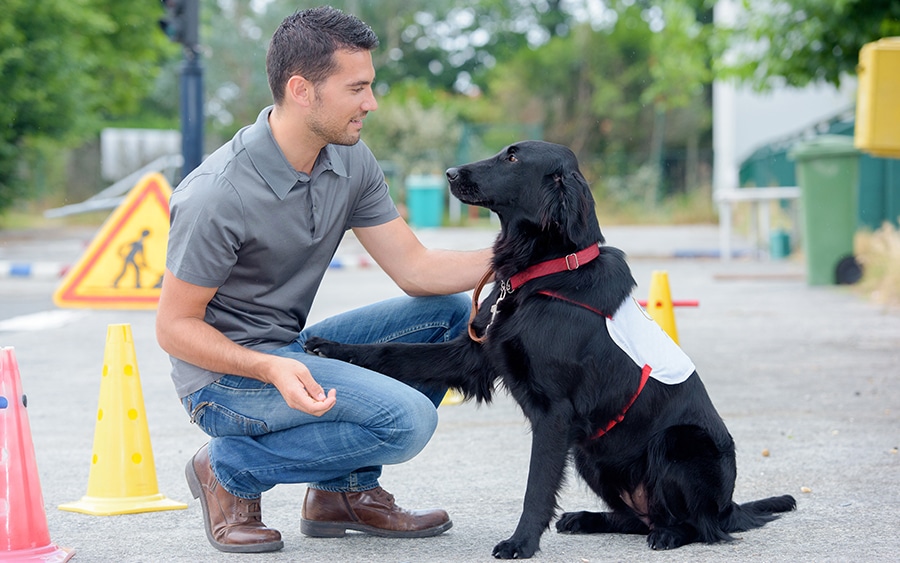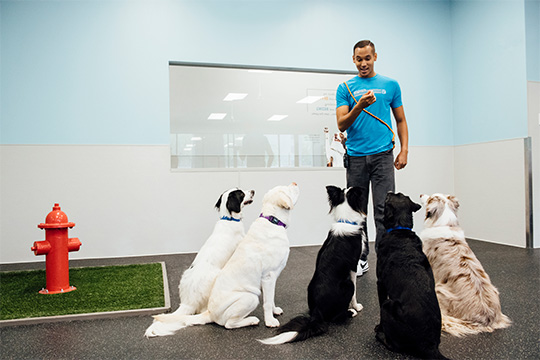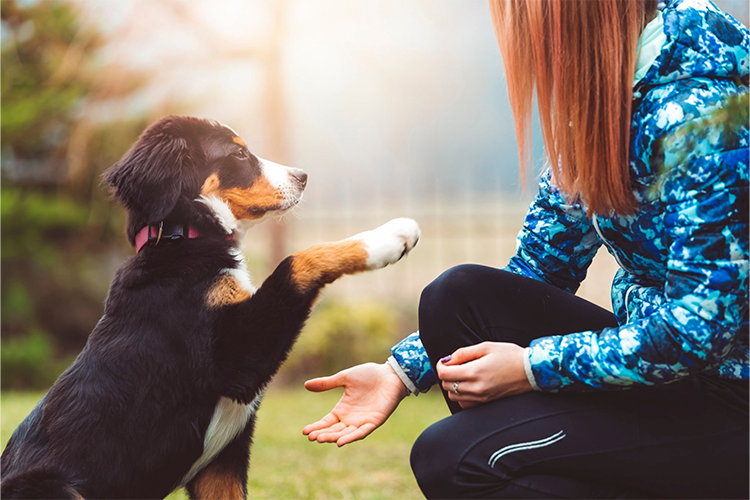Transform Your Pet dog's Actions With Proven Training Approaches
Changing your canine's behavior calls for a nuanced understanding of their specific traits and demands, as well as the application of proven training techniques. By using favorable support and recognizing essential add their body language, you can effectively deal with common behavior problems such as excessive jumping or barking. Consistency in your training strategy not just improves obedience however likewise fosters a deeper bond of trust fund and respect in between you and your family pet. The path to successful improvement may provide unforeseen obstacles that warrant further expedition.

Comprehending Pet Dog Habits
Recognizing canine behavior is essential for reliable training and communication in between humans and their canine buddies. Canines, as social animals, show a variety of actions influenced by genes, environment, and experiences. Recognizing these habits assists owners tailor their training approaches to fulfill the particular needs of their pets.
Trick elements of dog habits include body language, vocalizations, and social interactions. Furthermore, socializing plays a crucial role in forming habits; pets that interact positively with numerous individuals and various other pets are typically much more versatile and well-adjusted.
Furthermore, recognizing tension signals-- such as panting, pacing, or avoidance habits-- can protect against acceleration into a lot more serious problems. Proprietors who are attuned to their pet's habits can develop a safe and caring atmosphere, fostering trust fund and boosting the training process. Ultimately, a deep understanding of canine habits lays the foundation for an unified connection and efficient training results, guaranteeing both canines and their owners flourish together.
Positive Support Methods
Favorable reinforcement methods are widely acknowledged as one of the most efficient methods for training dogs, cultivating a favorable discovering atmosphere. This approach entails fulfilling wanted habits with treats, praise, or play, consequently encouraging the pet dog to duplicate those habits (Dog training). Unlike corrective approaches, favorable reinforcement constructs count on and reinforces the bond in between the fitness instructor and the canine
To implement positive reinforcement successfully, timing is crucial. Benefits ought to be given immediately complying with the preferred behavior to aid the pet make the connection. Uniformity is also crucial; utilizing the very same commands and incentives aids the pet understand what is expected. Additionally, varying the rewards can keep the pet dog involved. For example, rotating between treats, toys, and spoken praise can preserve passion and motivation.
It is crucial to keep in mind that favorable support is not concerning bribery; instead, it is about strengthening etiquette. Over time, as the pet discovers to connect specific actions with positive results, the regularity of incentives can be gradually minimized, transitioning to spoken praise or periodic rewards. This method not just urges obedience but likewise advertises a delighted and certain canine, making training an extra delightful experience for both events entailed.
Dealing With Typical Problems
Dealing with common issues during pet dog training is necessary for guaranteeing a unified and effective relationship in between the pet dog and its proprietor. Lots of pet owners run into behavioral challenges, such as excessive barking, leaping, and leash pulling. Recognizing the origin triggers of these actions is vital for effective training.
Extreme barking may stem from dullness, stress and anxiety, or an absence of socializing. To alleviate this, offer ample workout, mental excitement, and chances for social interaction with both people and various other pets. Leaping can usually suggest enjoyment or a need for focus. Training the dog to sit upon greeting can redirect this actions positively.
Leash pulling is another prevalent issue, regularly arising from a canine's enthusiasm to check out. Utilizing appropriate chain managing techniques, incorporated with training procedures that urge loose-leash strolling, can substantially boost this actions.
In addition, issues like resource safeguarding or separation anxiousness require customized techniques. Progressive desensitization and counter-conditioning can be effective in addressing these obstacles. By recognizing and proactively managing these usual issues, canine proprietors can foster a much more delightful training experience and reinforce the bond with their canine companions.
Consistency in Training
Uniformity is a cornerstone of reliable pet dog training, as it establishes a clear framework for the pet dog to understand expectations and habits. When incentives, commands, and signs are used uniformly, pet dogs can quicker grasp what is needed of them. Inconsistent training can result in complication, leading to unwanted habits that irritate both the trainer and the pet.
To attain consistency, it is crucial that all members of the home comply with the very same training methods. Using the very same verbal signs and hand signals makes certain that the pet dog obtains uniform messages. Furthermore, the timing of modifications and rewards need to be consistent; prompt reinforcement boosts the possibility that the click for info pet will certainly link the behavior with the end result.
Regular technique sessions, coupled with organized timetables for feeding, strolling, and playtime, help dogs expect and comprehend their environment, making them much more responsive to training. Eventually, consistency promotes a feeling of protection and trust, encouraging dogs to discover more successfully.
Building a Solid Bond
How can cultivating a solid bond in between a pet and its proprietor boost the training experience? When a canine feels protected in its connection with its owner, it is more most likely to display favorable behaviors and be receptive to discovering.

In addition, a reputable connection can lower anxiousness and behavioral issues, as dogs are much less likely to act out when they feel understood and cared for. Consequently, prioritizing the development of a strong bond not just enhances the training experience yet likewise adds to a happier and extra well-adjusted pet. Eventually, Continued the journey of training transforms right into a collective partnership, resulting in lasting behavioral renovations.
Conclusion

Owners who are attuned to their canine's actions can produce a nurturing and risk-free setting, cultivating trust and enhancing the training process. Ultimately, a deep understanding of canine behavior lays the structure for a harmonious partnership and effective training results, making certain both pet dogs and their owners thrive together.
Attending to common problems throughout dog training is important for ensuring a successful and unified relationship between the pet and its proprietor (Dog training).Consistency is a keystone of reliable pet training, as it develops a clear framework for the pet to understand actions and assumptions.In conclusion, transforming a pet's habits through confirmed training techniques needs an understanding of canine habits, the application of positive reinforcement methods, and an emphasis on consistency